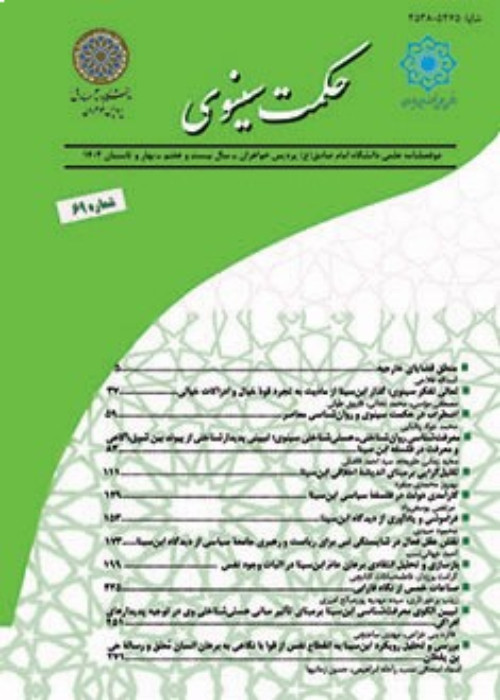Al-Farabi on the Five Arts
The subject of the present research is the nature of the five arts from the perspective of Al-Farabi, which has been investigated through a descriptive-analytical method. The five arts of logic are based on education and Al-Farabi's attention to the social dimension of human beings. Al-Farabi divides each of the conception and assertion sciences into two categories: perfect and imperfect. Each of these sciences includes rational and demonstrative, and imaginative and persuasive methods. Imperfect conceptions and assertions, according to the quantity and quality of contradictions, have degrees. Al-Farabi considers the reason for choosing persuasive and imaginative methods for educating the public to be the weakness of their perceptual faculties. This weakness arises from the nature and sensory foundation of humans, their inclination towards matter, and their engagement with sensory and imaginary knowledge. The art of demonstration is recognized as the ultimate goal of all logical arts and the true object of the theory of epistemological realism. Demonstration is considered the noblest of arts because it makes impossible the human retreat from their belief or from their recent convictions, and because of the inherent truth of its resulted propositions. Philosophy, as a demonstrative way to achieve beauty, is considered the highest rank of true knowledge. The commonality of the materials of persuasive arts lies in the possibility of contradiction of belief with external factors and their differences lies in the quantity and quality of contradictions discovered by them. Al-Farabi's attribution of the terms ‘way’ and ‘possession’ to dialectic indicates his conception of it as a differentia in the practice of debates. The speculative knowledge of rhetoric has more oppositions than dialectical knowledge. Fallacy, as an art with speculative premises from dialectic and doubtful premises from philosophy, is recognized as an art of seduction of the audience and also as a warning against fallacies. The common ground of fallacy definition with the ultimate aim of imitating truth with falsehood indicates the extensive domain of imitation and its role as the most important tool for fallacious reasoning. The class of imaginations, with its motivating role from the power of perception, takes precedence in performing actions.
- حق عضویت دریافتی صرف حمایت از نشریات عضو و نگهداری، تکمیل و توسعه مگیران میشود.
- پرداخت حق اشتراک و دانلود مقالات اجازه بازنشر آن در سایر رسانههای چاپی و دیجیتال را به کاربر نمیدهد.


